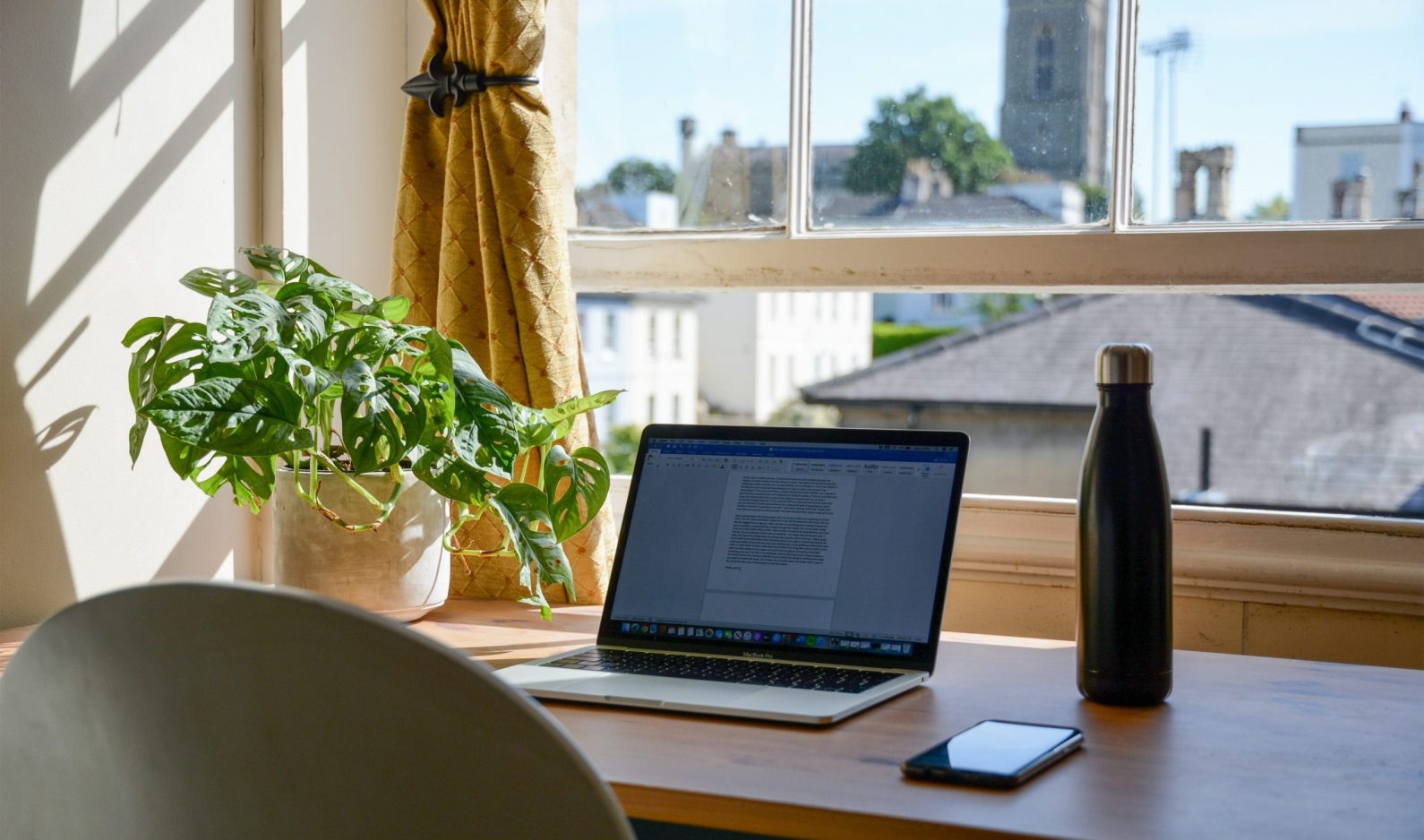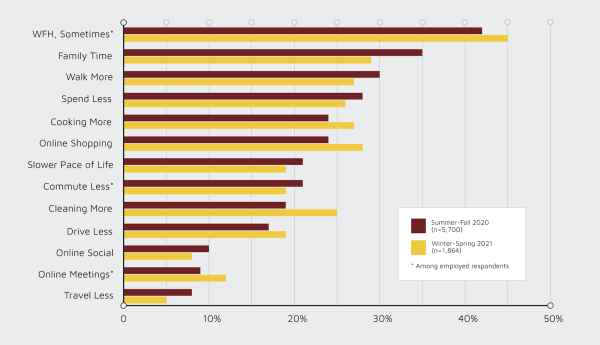
Embracing Change: Let’s Not Go Back To 2019’s Transportation Choices
Remote work is liberating. There's no need to abandon it now.
Among the most dramatic changes wrought by the COVID-19 pandemic was a sudden reduction in mobility. A huge number of people commuted less frequently, and almost everyone traveled less for business and personal reasons, shopped less often at stores, dined less often at restaurants, and nearly ceased to socialize face-to-face.
We replaced some of this former mobility with virtual interaction. Many of us quickly became experts at navigating technologies that allowed us to interact with coworkers, teachers, doctors, friends, and family, almost as if we had traveled to see them. Many of us also appreciated the extra time suddenly gained by simply not having to travel to places. And as the pandemic went on, the technologies themselves improved, making virtual interaction increasingly seamless.
Nationwide, more aspects of society are reopening. But we should resist the urge to return to all of our pre-pandemic transportation choices. Maintaining some COVID-prompted habits can be beneficial to individuals, organizations, and the environment.
In the spring of 2020, I launched the COVID Future survey project, together with collaborators both at Arizona State University and at the University of Illinois Chicago, with funding from the National Science Foundation. The project is a multi-wave, national survey of U.S. adults that aims to measure both how much their transportation choices changed during the pandemic and the extent to which people expect these changes to persist as the pandemic wanes. To date, we have collected thousands of responses in two waves of survey data, and we are collecting a third survey wave this fall.
Although the COVID-19 pandemic has brought illness, death, and economic hardship, our data suggest an opportunity to emerge from the pandemic with an improved quality of life. In summer and fall of 2020, just under 75% of COVID Future survey respondents reported there were some aspects of pandemic life that they may want to keep into the future. In winter and spring of 2021, this fraction rose to nearly 80% among the same group of people. Many of the features of pandemic life that respondents most valued related to reducing the need to go places, with working from home at the top of the list for employed adults (Figure 1). Consistent with our findings, the Pew Research Center’s October 2020 survey reports that among those who can do their jobs remotely, nearly 90% would like to telecommute at least some of the time post-pandemic.

Many of the features of pandemic life that respondents most valued related to reducing the need to go places, with working from home at the top of the list for employed adults.

Our survey data also suggest that remote work does not necessarily lead to a drop in productivity. Among those new to working from home, 28% reported that their productivity fell, while 36% reported that it rose. These findings of stable or increased productivity while working from home during the pandemic are echoed in numerous other studies.
The pandemic experience has made clear that many of us can work from home productively, and also that many of us enjoy it and would like to continue the practice — at least part-time. Many employers continue to offer remote work flexibility now and into the post-pandemic future, and because happier workers are more productive, I expect both those companies and their employees to benefit long-term.
An alarming number of employers, however, are calling their workers back to the office full-time, entirely disregarding the learning that has taken place during the pandemic period, and the opportunity we now have to improve quality of life for those who can work remotely. It is as though they want to turn back the clock to 2019. Some of the most visible advocates of a return to the status quo are institutions like governments, as well as companies in the finance sector. Although some observers are advising companies to continue offering remote work, I fear that the “back to 2019” trend may grow.
Most companies, governments, institutions, and organizations are still set up to operate essentially as they did in 2019. Though many work functions moved online, they did so as stopgap measures, without organizations doing the work to fully reimagine how to optimize operations with workers fully or partially remote. It will take substantial effort and additional innovation to realize lasting change.

Most companies, governments, institutions, and organizations are still set up to operate essentially as they did in 2019.

The COVID Future data clearly suggest that lasting change will bring significant quality of life benefits for many workers, while possibly also improving productivity. There are also clear societal benefits of reducing commute trips — especially those made in private cars — particularly since many of those commutes now appear to be unnecessary.
As we move beyond the pandemic, the challenge will be to resist the temptation to slip back into our 2019 lifestyles. Outside the workplace, this will be an individual struggle for all of us as we strive to put some of our newfound priorities into practice.
For the workplace managers who have a say in the options that others have, I challenge you to proactively work with your employees and make investments where needed to forge new patterns of living, working, and interacting. This chance to radically rethink and improve our day-to-day lives probably will not come along again soon.
Figure 1. Top aspects of pandemic life that survey respondents would like to keep

Fraction of weighted survey respondents who identified each aspect of pandemic life as among the top three that they would like to keep post-COVID. Percentages sum to more than 100% because respondents could select up to three aspects. Respondents who did not want to keep any aspect of pandemic life (25% in Wave 1 and 20% in Wave 2) are not included.